- Home
- Encyclopedia
- Booze, Cops, and Bootleggers: Enforcing Prohibi...
Booze, Cops, and Bootleggers: Enforcing Prohibition in Central Wyoming
Prohibition was on its last legs in Wyoming when top public officials—Casper’s mayor and police chief and the Natrona County Sheriff—were accused of corruption. The men who ran the town and the county, prosecutors claimed, were in cahoots with the crooks who supplied illegal liquor to the people of central Wyoming. All three men were charged in federal court with taking regular payments from bootleggers and bar owners—the men and women who made, shipped, and sold illegal booze.
The charges may well have been true. Casper was one of the biggest centers for vice—the sale of so-called sinful pleasures—in the Rocky Mountains. Gambling, though illegal, was practiced more or less openly in the cafes and bars. Liquor, wine and beer, illegal in the state since 1919, often were openly available in the same places. And though Casper only had around 17,000 people, the town was home to uncounted prostitutes. Wyoming’s oil-drilling, oil-refining, mining, ranching and railroad economy attracted a lot of single men. Many traveled to Casper for sex and alcohol. The brothels and speakeasies clustered in the Sandbar district, just northwest of downtown.
Town and county officials—and the police and sheriff’s officers they employed—had to have known what was going on. But whether they were actually paid to ignore these crimes of pleasure would turn out to be hard to prove in a court of law.
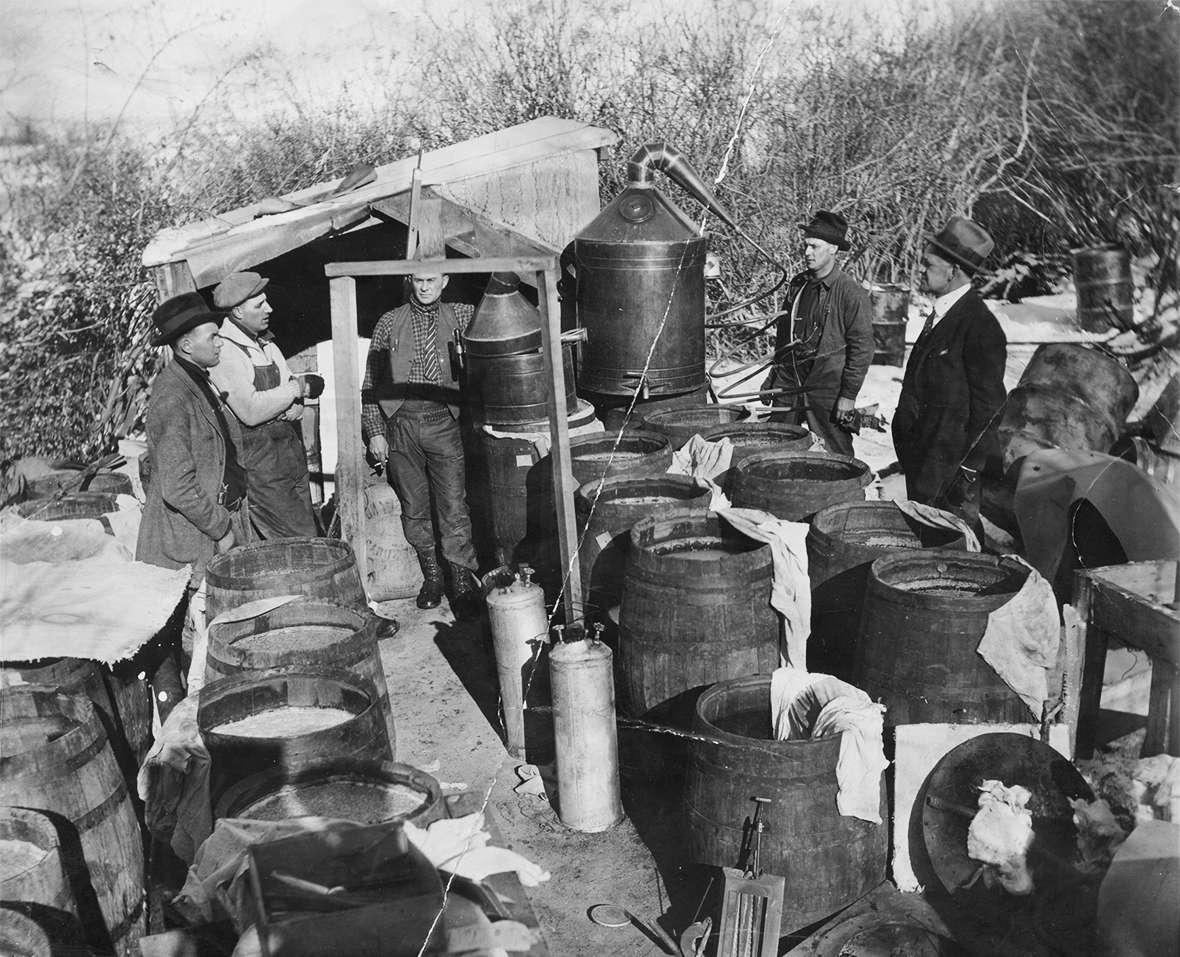
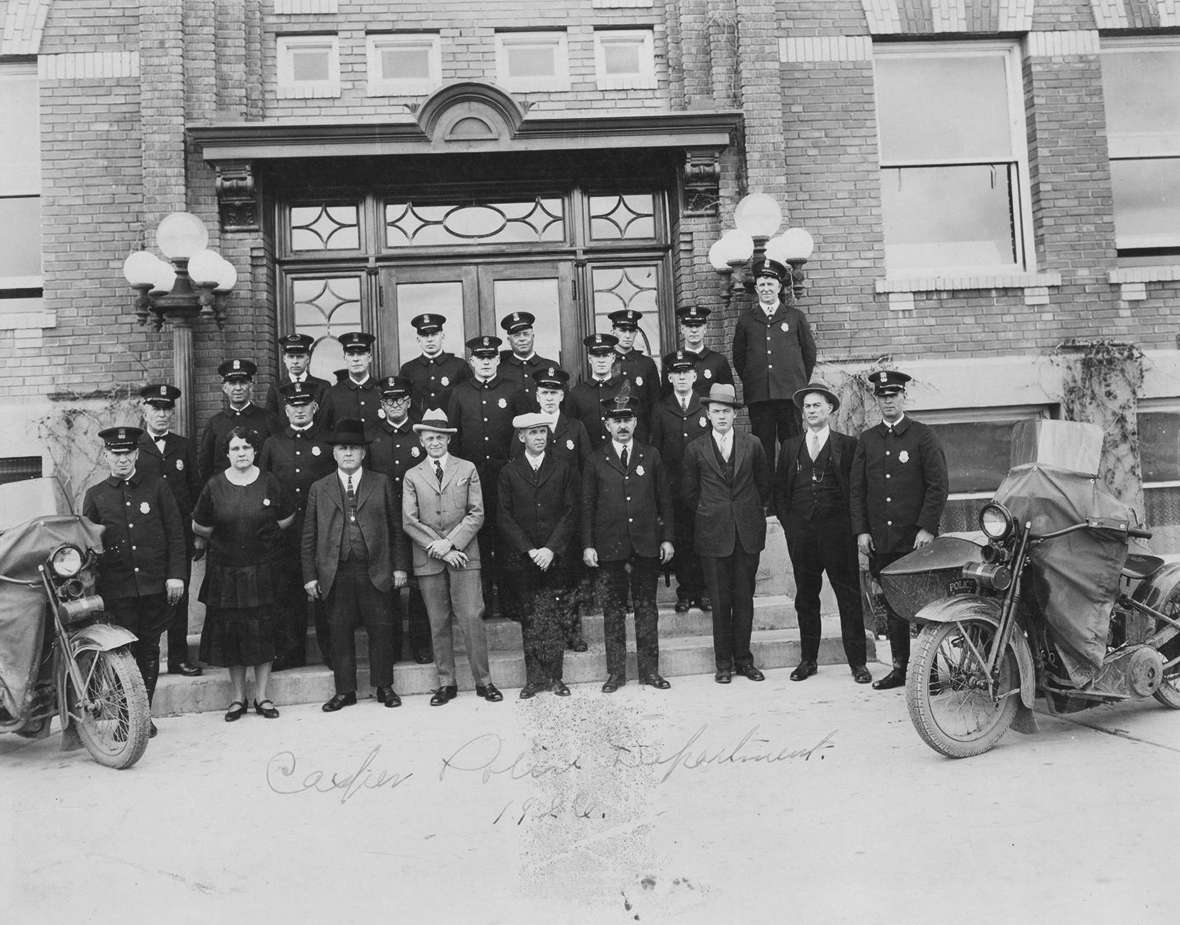
Prohibition’s beginnings
The temperance movement, opposing liquor and saloons, grew stronger and stronger in the United States in the late 19th- and early 20th centuries. Many of its stoutest backers were people fighting for all kinds of reforms, including votes for women. Under pressure from groups like the Women’s Christian Temperance Union and the Anti-Saloon League, Colorado outlawed the possession, manufacture and sale of alcohol in 1914. Idaho went “dry,” as people said then, in 1915. Nebraska, South Dakota, and Montana followed in 1916, and Utah in 1917. By then, 37 states had passed dry laws. Wyoming was the only wet state left in the Rocky Mountains. Its border towns did a brisk business with booze customers driving in from neighbor states.
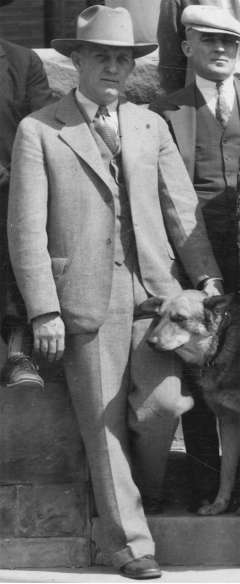
Finally, Wyoming went along. In 1919, the Legislature passed a state law banning alcohol. By then, enough states had approved a change in the U.S. Constitution that national prohibition of alcohol, too, had become law. The U.S. law went into effect Jan. 29, 1920.
Right away, Wyoming had trouble with enforcement. No one, it seemed, ever expected local police or county sheriffs to do much. Therefore, the Wyoming Legislature set up a new agency specifically to enforce Prohibition statewide. There was no highway patrol then. Other than federal officers, there were no police whose authority reached statewide. Governor Robert Carey appointed Fred Crabbe—a lawyer with no police experience, but president of the Wyoming chapter of the Anti-Saloon League—to head the new state prohibition agency.
Crabbe hired John Cordillo, a former Denver policeman with prohibition enforcement experience in Colorado. John Cordillo brought with him his brother Pete, and another Colorado cop named Walter Newell. Soon they made headlines in Laramie when they arrested five men and a woman and captured 400 gallons of illegal liquor in late August 1919.
An early killing—by Prohibition agents
Two days later, Frank Jennings, a popular local rancher, was found shot to death in his car on the side of the Lincoln Highway, just north of Laramie.
At first, no one could tell who’d done the crime. Jennings’ body had five bullet wounds in it. The shots had come from behind the car. The Albany County prosecutor, following suspicions of his own, began questioning the three state prohibition agents. Then they testified publicly before a coroner’s jury. There were discrepancies. Details in the three men’s stories of the night Jennings was killed didn’t match up.
All three were arrested and charged in connection with Jennings’ death. Laramie was tense. There was talk of a lynching. Jennings’ family hired the former chief of police in Denver—the three agents’ former boss—to interrogate them. He questioned them all night in a cell. The next morning, they were moved to Wheatland for their safety.
In the car on the way, Pete Cordillo told the Denver detective that Newell had shot Frank Jennings. They’d thought they were following the car of a couple of well-known local bootleggers, Cordillo said, and had motioned the driver to pull over. But when the car didn’t stop they began chasing it. The car then veered off the road and almost immediately, Cordillo said, Newell was out of their car, standing on the running board of Jennings’ car and shooting with his rifle.
Before national Prohibition was even on the books, Wyoming’s record of enforcing the law against liquor looked disastrous. The case came to trial the following April. All three were convicted of manslaughter. John Cordillo was sentenced to 15 to 20 years in the state prison, and the other two drew similar sentences.
Haphazard police work
Before long, the Legislature scrapped Crabbe’s job and replaced it with a position of commissioner in charge of all state law enforcement, not just the Prohibition laws. But it continued to be extremely difficult to enforce laws that a large proportion of Wyoming’s people simply didn’t want to obey. And the police work continued to be haphazard, and sometimes violent.
In Cody, in October 1922, a town marshal tried to arrest a federal Prohibition officer for drunkenness. The federal officer had been partying in a house with two women who had low reputations in the town, two bottles of ginger ale, and a bottle of Canadian whiskey that had come from the county sheriff’s evidence vault. In the scuffle, the marshal broke the federal officer’s jaw and the fed shot the marshal in the leg. After a full day and evening of testimony in a packed courtroom, a town judge fined the fed $100 for public intoxication.
The following June, things got more serious. When the Park County sheriff was out of town, the county prosecutor got a tip of a cache of liquor near Cottonwood Creek north of Cody. He rounded up one of the sheriff’s deputies in town, and deputized a courthouse janitor. Then he drove the two men out to the site and dropped them off, armed with rifles, to wait for the bootleggers to come pick up their stuff.
Two men arrived in a car some hours later, stopped near the cache, apparently loaded up some liquor, and started off. Once the booze was in the car, the deputies showed themselves and ordered the men to stop. But the driver, A.E. Carey, stepped on the gas, the Cody Enterprise reported. The deputies opened fire from 50 feet away. In the passenger’s seat, George “Scotty” Sherrin was killed instantly. Carey was hit in the thigh but kept driving, 60 miles all the way back to Greybull, with his friend’s body “soaking in his own blood on the floor of the car where he slid as he died,” the newspaper reported.
The Rosses crack down
After World War I, a bad drought and a sluggish economy drove Wyoming into a depression. William B. Ross, a Democrat and a stout Prohibitionist, benefited politically from the times and got himself elected governor in 1922. He persuaded the Legislature to give him the power to fire elected county officials—sheriffs, for example, or county commissioners—who were failing to enforce Prohibition laws.
William Ross died in 1924, but his wife, Nellie Tayloe Ross, elected to take his place, took advantage of the new law and fired well-known local officials in Park, Hot Springs and Natrona counties.
She fired two state officials too, in connection with their drinking and incompetence—a Game and Fish Department commissioner, and M.S. Wachtel, in the new post of statewide law-enforcement commissioner. It was a big scandal. An investigation showed Wachtel drank on the job, failed to enforce Prohibition—and took bribes from bootleggers to look the other way.
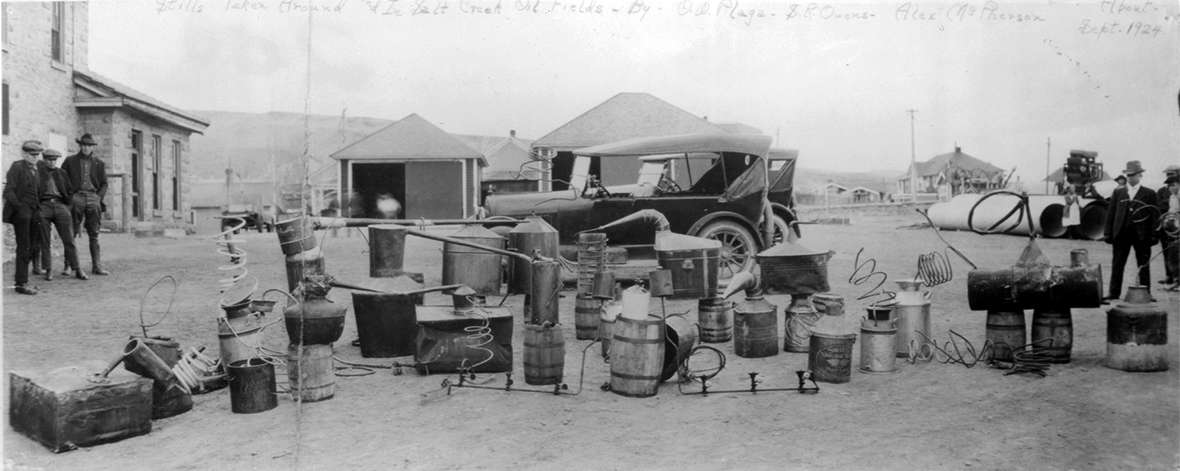
Graft in Edgerton
Law enforcement officers had been given an impossible task: to stamp out the liquor business among people who still very much liked to drink. As Prohibition continued, contempt for the officers and for the law itself spread wider and wider. Bootleggers made more and more money, and were happy to pay police to leave them alone. Corruption spread through law enforcement from top to bottom.
Not all police were corrupt. A file survives in the National Archives in Seattle that details the investigations by federal Prohibition officers in the little town of Edgerton, on the edge of the Salt Creek Oil Field north of Casper. Midwest, the company town at Salt Creek, was dry because the Midwest Oil Company wanted it that way. But the little towns that sprang up around it during the nineteen-teens and -twenties—Lavoye, for example, and Edgerton—were packed with bars and brothels that served the oil field hands when they came off work.
Driven by motives we can only guess at, an anonymous tipster in Edgerton began writing letters in November 1928 to one of the top federal Prohibition agents in Seattle. This agent, Lon Davis, was in charge of the federal anti-booze efforts in Wyoming and other western states. Edgerton’s elected officials, the tipster said, “think they are just about immune from the law.”
Some ran stills themselves. Others took a cut of the whiskey made by other bootleggers. And the local justice of the peace, W.J. Stull, charged bootleggers and bar owners monthly fees to stay in business, the tipster said. It was like an insurance policy: If the bootleggers were arrested by any other arms of the law—by county sheriff’s deputies, or state or federal cops—the fines they had to pay on those charges would be deducted from the fees they owed the Edgerton officials.
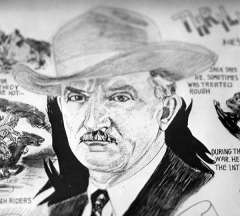
But there were much bigger scandals breaking in Wyoming at the time. In November 1928, the same month the tipster began writing to Seattle, W.C. Irving, who had replaced Wachtel as Wyoming’s top cop—law enforcement commissioner—had left office under a cloud of suspicion. In May, a federal grand jury charged him with conspiracy to evade Prohibition laws. Also indicted were 29 other people, including suspected bootleggers from Rawlins, Thermopolis, Cheyenne, Rock Springs and Evanston. Irving and his assistant, James Adler, were charged with taking thousands of dollars in protection money.
Gov. Frank Emerson, meanwhile, had replaced Irving in the state commissioner’s job with Jack Allen. Allen, a Democrat and veteran of both the Spanish-American and World wars, had just lost the 1928 Natrona County Sheriff’s race to the Republican incumbent, Gilbert O. Housley. Though affairs in Edgerton must have seemed minor compared to the Irving scandal at the time, Allen kept pressuring Lon Davis in Seattle to do something about it. Davis’ notes suggest Allen was still smarting from his loss, which had been heaviest around Edgerton and Salt Creek. Though he lost by a two-to-one margin, he may well have suspected the election had been stolen from him, by friends of Housley in cahoots with bootleggers.
In the summer of 1929, two federal agents visited Edgerton for a look around. Stull, the justice of the peace (and editor of the Salt Creek Gusher) was hazy at first when the agents asked him about discrepancies between his court’s records and the records of the Edgerton city treasurer over how much his court collected in fines. But when the agents suggested the information they were collecting probably would be turned over to a federal grand jury, Stull got more talkative. The fees were $50 a month from the guys running the joints where people could buy booze, he said. They weren’t really fines—they were more like an “occupation tax,” he said. The system had been running smoothly for at least five years. Stull gave the agents names of four men who’d each paid their $50 the month before.
In their report the agents concluded that pool-hall and gambling-hall owners in Edgerton had been making regular payments to the town for years, in exchange for being allowed to operate unmolested. A Judge Blake of the municipal court had an arrangement just like the one Stull described—any fines the joint owners had to pay to other authorities would be deducted from what they owed the town of Edgerton each month. But the story stops there. Federal prohibition supervision of Wyoming moved to a Denver office that summer, and those files have not survived.
A few successes for the prosecutors
Former top state law-enforcement commissioner W.C. Irving, meanwhile, was tried, convicted, and sentenced to 18 months in federal prison. He was the highest Wyoming official convicted of corruption in the Prohibition years. Two bootleggers from Thermopolis and two from Kemmerer were convicted as part of the same case.
People continued to break the liquor laws, however. Lawmakers, in frustration, stiffened the penalties. Wyoming in 1927 made possession of a still punishable by three years in prison. Arguing against the proposal, a young legislator from Cody who decades later would become governor, Milward Simpson, noted the saloons in his town “run wide open.” Juries wouldn’t convict, he said, if it meant a jail term for the saloon owners. In 1929, the U.S. Congress went even further, passing the so-called Five & Ten Law—up to five years in federal prison and a $10,000 fine, just for possession of alcohol.
And encouraged, perhaps, by their success in the Irving case, federal prosecutors in Wyoming kept using the same methods—get a grand jury to bring conspiracy charges against large numbers of defendants. But Simpson was right. Juries were reluctant to convict. People were growing sick of the whole thing.
Repeal on the horizon
In 1928, New York Governor Al Smith, a wet candidate, lost the presidential election to Herbert Hoover, a mining engineer and former U.S. secretary of commerce. There were plenty of other issues at work; Smith probably lost primarily because he was a Catholic from New York City in an America that was still mostly rural and Protestant. In October 1929, the stock market crashed, and the nation started into a tailspin. A depression like the one that had already gripped Wyoming for 10 years spread across the U.S. It was so deep and lasted so long it became the Great Depression.
When Hoover ran again in 1932, he didn’t have a chance. He lost to New York Governor Franklin D. Roosevelt. The new president stood for a lot of things, mostly for a willingness to find out if the government could fix the terrible economy. But he also stood for Repeal, which meant repeal of the 18th Amendment to the Constitution, which had outlawed alcohol 12 long years before.
In February and March 1933, the Wyoming Legislature repealed its Prohibition laws. State conventions were ratifying the 21st amendment—repealing the 18th—by overwhelming margins, some even unanimous. Also in March of 1933, Congress passed a law allowing the sale of weak, 3.2 percent-alcohol beer. Three-two beer became legal in Wyoming at 12:01 a.m. May 20, and big crowds stayed up in Casper for an all-night drunk.
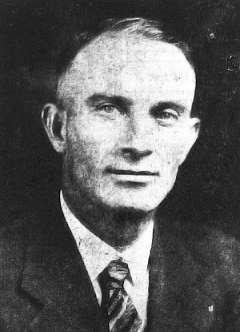
With state Repeal already on the books, and nationwide Repeal clearly on the horizon, federal prosecutors in Wyoming appear to have been in a hurry to bring bootleggers and their municipal friends to justice before the law changed, and everyone would want to forget the crimes.
Federal charges of conspiracy and corruption
Early in May, federal prosecutors persuaded a grand jury to bring charges against 36 people in Natrona County for conspiring to violate federal Prohibition laws. To win, the prosecutors would have to prove that the people they charged had had plotted ahead of time, together, to break the federal laws against owning, selling or transporting illegal alcohol. It meant that a café owner who sold a pint of moonshine from under his counter, or a person who drove a truck loaded with booze, would be as guilty as a bootlegger running a statewide operation, or a county sheriff who took his money to look the other way.
Charged by the grand jury were Natrona County Sheriff Gilbert O. Housley, Casper Mayor R.W. Rowell, Casper Police Chief Michael Quealy, and a number of well-known local bootleggers, including Frank Converse, Cash Olds, and Dave Davidson and his two sons, Gilbert and Lawrence. The arrests were made by a group of deputy U.S. marshals led by Jack Allen, former Natrona County sheriff candidate, former Wyoming law enforcement commissioner and now the top U.S. marshal for Wyoming. Allen must have enjoyed arresting Housley, his former political foe.
The top defendants all pleaded not guilty and were let out of jail on $2,500 bonds. Housley demanded to be tried in Casper “where my friends and associates can hear the case and be thoroughly informed.” But his lawyers and the bootleggers’ lawyers decided differently. In Casper, where everyone knew them, the men couldn’t get a fair trial, the lawyers believed. The trial was moved to Cheyenne. It opened in mid July.
Two star witnesses
The government built its case mainly on the stories of two men. First was Joseph Warren, a former state legislator and purchasing agent for the Midwest Oil Company, who, the government lawyers said, had been collecting money monthly from the bootleggers since 1922. Warren testified that in 1931 alone, he’d collected more than $50,000 from bootleggers. About half of that went to Mayor Rowell, Warren said, and $5,000 or $6,000 to Chief Quealy.
Albert Morris was the second star witness. Until recently, Morris had worked for Housley as undersheriff. He told the court he routinely carried messages between Housley and members of “the combination”—the local ring of whiskey makers and sellers—sometimes for as much as $100 per month over his regular monthly salary of $106.86.
Warren swore the payoff arrangements stretched all the way back to 1922, when Rowell first ran for mayor. After Rowell was elected, according to the prosecutor, Warren collected an initial payment of $1,000 from Frank Converse, the biggest booze manufacturer in Natrona County. After that, for years, he’d collected bootleggers’ payoffs to the mayor, the police chief and the sheriff.
Sheriff Housley had fired Morris the previous year. When, in May 1933, it became clear that Morris was likely to testify to what he knew, Housley had traveled to Denver where Morris was living in a hotel. There, according to Morris, the two talked for hours. Housley first said he would “plead guilty and take the rap” if Morris had told too much. Then Housley asked if Morris really would stick with his story or side with his old boss after all. Finally, Morris said, Housley asked if Morris was afraid of him.
Morris told the court he answered he was not, but told Housley “but I remembered what happened to Harvey Perkins,” a small-time criminal who had turned up shot to death outside Casper the fall before. Then, said Morris, Housley threatened him directly, saying “If you ever get on the witness stand and tell what you know, I’ll shoot you, for I’d rather be behind bars as a murderer than have my children know I’m in jail for graft.”
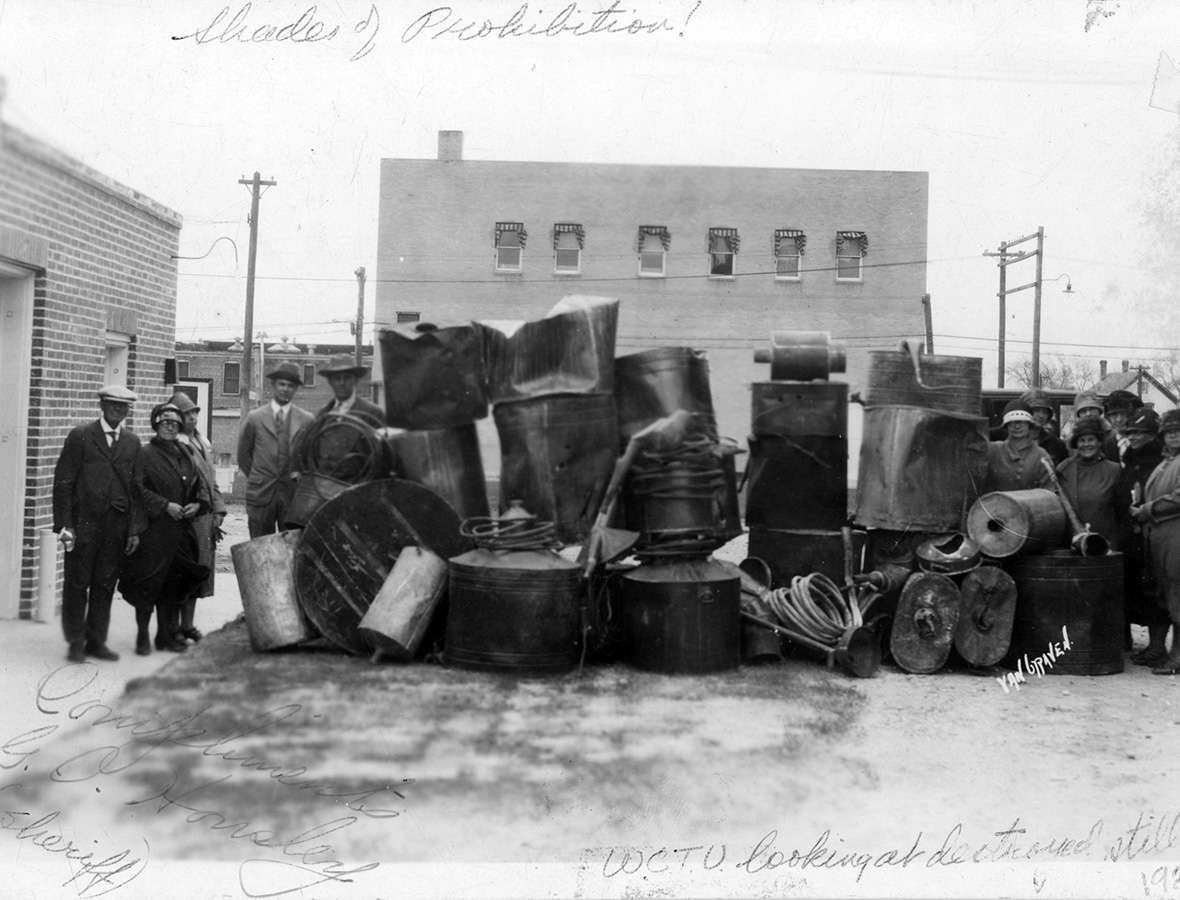
Cross-examination
But under cross-examination, the government’s two main witnesses looked less trustworthy. Morris denied the defense lawyer’s suggestion that he had anything to do with the theft of six gallons of booze from a vault in the courthouse.
And Warren, who’d been elected to the Wyoming House of Representatives in 1930, had to admit he’d also served two terms in Nebraska—but in the state penitentiary, not the legislature. This fact had already come out in the election campaign, Warren said. He also admitted he’d been jailed once in Casper “for some gunplay,” as the paper put it, after he lost his job as purchasing agent for the oil company.
Warren detailed a cozy relationship with Rowell—the mayor and also a printer—by which Warren would steer the oil company’s printing contracts to Rowell, who would get paid, but not always have to do the work. Asked by one of the defense lawyers if that meant Warren was also “double-crossing the Midwest,” Warren answered that he didn’t treat the oil company any worse than it treated him. Warren, said one of the lawyers, was “an ex-convict, a drunkard, disgraced and down and out. … I have never seen a more thoroughly discredited witness.”
Mayor Rowell testified he’d done all he could to clean up Casper’s “vice and liquor conditions,” that he never had any agreement with bootleggers, and that Warren’s claim the two had connived to make money off the Midwest printing contracts was “ridiculous.” Five other men—two patients from a Denver hospital where Morris spent time after he was fired by Housley, the Cheyenne police chief, a detective for the Burlington Railroad and a druggist from Edgerton—all testified they’d heard Morris say he’d do anything he could—“dirty if I have to”—to put Housley in jail.
Like Rowell, Sheriff Housely swore that he, too, was clean. He denied he’d ever taken protection money, or made any agreements with Warren or Morris on payments; said he’d never paid Morris more than $50 per month over his $101 salary, a common practice around the state; and swore he had raided many of the places himself that supposedly were protected.
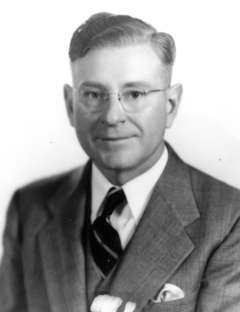
After five days of testimony, the paper noted that Oregon had just joined the states voting for repeal of the 18th Amendment and of its own prohibition laws.
Bootleggers on the stand
The next day, several of Casper’s most prominent bootleggers and saloon owners took the stand. Dave Davidson, supposedly Casper’s biggest booze maker, said he had been in business in 1924 and ’25 but was no longer—and said he’d never paid any protection money to Joe Warren.
Gordon Weekly, owner of the Black Cat café, noted that the sheriff’s office had once raided him nine times in one night. Surely that showed he’d never paid any protection money, he claimed. On one of those raids, said Weekly, Housley had even knocked him down when he tried to dump the whiskey he had on hand. But when the government lawyer suggested Weekly objected to the raid because he was paying protection, and that was why Housley had knocked him down, the café owner denied it.
Three other bootleggers, including Pearl “Dynamite” Kyle, said they, too, had been in business a long time but had never paid off the cops.
The federal prosecutor, Ewing T. Kerr, asked the jurors to scratch their heads and think if such claims really made sense. “Is it not strange,” he asked the jury, that the large operators got to keep on operating, “while the small operators were knocked off” by the police. But really, Kerr said, it wasn’t the bootleggers who were the real criminals in the case. “It’s the conspirators, the men in public office who betrayed the public trust to the good citizens of Casper by accepting graft money at the expense of the taxpayers. …”
“Certain gentlemen,” Kerr said—meaning Rowell and the whiskey merchants—got together before the election and agreed on how the system would work. And as soon as the mayor was elected “that procedure was put into place.”
Acquittal
But looking back, it seems that Kerr’s distinction between criminals and real criminals may have confused the whole issue. Before the jury retired to consider its verdict, federal Judge T. Blake Kennedy reminded them that conspiracy law makes any one member of a conspiracy equally guilty with any other. After deliberating one long evening and all the next day, the jury sent a note to the judge asking if a man who was hired by another man to break the law was equally guilty with his employer. Yes, Kennedy answered, if the employee knew he was hired to break the law.
Maybe, in the jurors’ minds, the whole issue flipped. Maybe they concluded that that if any conspirator was as guilty as any other, then any conspirator was also as innocent as any other. Kerr had as much as said that the public officials had committed far more serious crimes than the bootleggers they’d taken money from. But because they’d all been charged with the same crime, it didn’t seem fair to convict them all of the same crime as some were obviously much more guilty than others.
Or maybe the jurors were just sick of Prohibition altogether. Near the end, one of the defense lawyers had speechified at length about the “wave of protest” to Prohibition then
sweeping the nation. “The whole case smacks of the graveyard,” the lawyer shouted. “Let the dead bury the dead.”
The jury, anyway, buried the case. The jurors found all 29 defendants not guilty. Though there was almost certainly a lot of graft money being paid in Casper and Wyoming, it’s clear in hindsight that the government lawyers charged far too many people. Perhaps if they’d just charged Rowell, Quealy, Housley and two or three of the men who had paid them routinely—say, Converse, Davidson and Olds—they would have had a much tighter case, uncluttered by questions of relative guilt.
But they didn’t do that. The jury, like the rest of the nation, was sick to death of the strange combination of hypocrisy and corruption that Prohibition dragged along with it wherever it went. So the jurors did their best to kill it off, once and for all.
Repeal
Public opinion in Wyoming had by that time become disenchanted with the so-called Noble Experiment. In 1918, Wyoming voters approved state Prohibition by a better than three-to-one margin. By 1926, Wyoming’s U.S. senators F.E. Warren and John B. Kendrick were reporting their mail on the topic about evenly divided. The tide had turned by November 1932, when the Legislature authorized a referendum: 71.5 percent of voters voted in favor of state Repeal—more than two to one.
The following spring, Wyoming was one of the first states to ratify the 21st Amendment. When Utah became the 36th state to ratify the amendment in December 1933, the provision became law nationwide.
Wyoming’s state Repeal did not become law until April 1935, however. As well as the 3.2 percent beer legalized earlier, drinkers could now get legal access to beer, wine and spirits. Less easy to measure was the hangover left by all that corruption—and its effect on people’s sense of the rule of law.
Resources
Primary sources
- The Casper Daily Tribune and its Sunday version, the Casper Tribune-Herald, paid close attention to the government’s conspiracy case against the Natrona County bootleggers, cops and politicians. See the editions of May 1, 3, 5, 7, 9-11, and 16, 1933; July 17-21, 23-27 and 30, 1933. This paper is on microfilm at the Western History Center at the Casper College Library, at the Natrona County Library, and at the Wyoming State Archives in Cheyenne.
Secondary sources
- Jones, Walter R. “Casper’s Prohibition Years,” Annals of Wyoming, vol. 48 No. 2, (Fall 1976), pp. 263-273. Stories of more criminal cases than I’ve included here, drawn mostly from newspaper accounts, but without the names of the officials involved.
- _____________. History of the Sand Bar (1888-1977), Casper: BASO, 1981. This book is full of vivid anecdotes, taken mostly from newspaper accounts, and lots of good historical photos of the Sandbar in its heyday.
- Scheer, Teva J. Governor Lady: The Life and Times of Nellie Tayloe Ross. Columbia: University of Missouri Press, 2005.
- Larson, T.A. History of Wyoming. Lincoln: University of Nebraska Press, 1965, pp. 408-419, 439-443.
- Roberts, Phil. “Inside Federal Prohibition Enforcement in Wyoming: The Case of Bootlegger Busts in Northern Natrona County.” Annals of Wyoming, 74:3 (Summer 2002), pp. 2-7. Accessed July 14, 2016 at https://archive.org/stream/annalsofwyom74142002wyom#page/n83/mode/2up/search/Bootlegger.
- Roberts, Phil. “Wyoming’s Pioneers of Prohibition: The United States Army, the U.S. District Court, and Federal Enforcement of Laws Governing Morality.” Wyoming Law Review 1:2 (Spring, 2001), pp. 633-645.
- Roberts, Phil. “The Prohibition Agency’s First Case: Official Zeal, Mistaken Identity, and Murder in Wyoming, 1919.” Western Legal History, 11:2 (Summer/Fall 1998), pp.145-61.
Illustrations
- The photo of Ewing T. Kerr is from the Wyoming State Archives. Used with permission and thanks. The 1926 photo of the Casper Police Department is from the American Heritage Center at the University of Wyoming. Used with permission and thanks.
- The rest of the photos are from the Casper College Western History Center. Used with permission and thanks.
